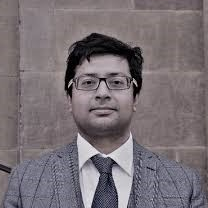Real-Time Monitoring Technology for Built Infrastructure Systems
A special issue of Sensors (ISSN 1424-8220). This special issue belongs to the section "Intelligent Sensors".
Deadline for manuscript submissions: closed (15 December 2024) | Viewed by 34567
Special Issue Editors
Interests: vibration; energy harvesting; structural health monitoring and control; smart materials and structures; dynamical systems; risk quantification and reliability analysis
Special Issues, Collections and Topics in MDPI journals
Interests: bridge engineering; structural health monitoring; system identification; structural dynamics; earthquake engineering; sensor technologies; machine learning; decision analysis
Special Issues, Collections and Topics in MDPI journals
Interests: smart materials and structures; sensors; structural health monitoring; structural control; robotics; safety and sustainability of civil infrastructure systems
Special Issue Information
Dear Colleagues,
Real-time detection of built infrastructure systems is rapidly gaining prominence for traditional (e.g., railways, bridges, pipelines) and emerging (e.g., wind turbines) infrastructure. While damage detection and structural health monitoring remain key questions, detection of other features of interest includes control, repair/rehabilitation, and other lifetime performance measures. This Special Issue addresses new methods, infrastructure demands, feature development, and related implementation around the question of ‘real-time’, in its widest interpretation. The topics include but are not limited to:
- Recursive methods for real-time detection;
- Model updating;
- Digital twinning;
- Sensor placement strategies;
- Sensor comparison;
- Monitoring design;
- Novel features of interest;
- Creation of robust detection of markers;
- Artificial Intelligence;
- Guidelines of reproducibility and accuracy;
- Quantification and qualification of uncertainty;
- Health-monitoring-informed decision support;
- Surrogate modeling applications;
- Advanced computer vision.
Dr. Vikram Pakrashi
Dr. Ekin Ozer
Prof. Dr. Maria Q. Feng
Guest Editors
Manuscript Submission Information
Manuscripts should be submitted online at www.mdpi.com by registering and logging in to this website. Once you are registered, click here to go to the submission form. Manuscripts can be submitted until the deadline. All submissions that pass pre-check are peer-reviewed. Accepted papers will be published continuously in the journal (as soon as accepted) and will be listed together on the special issue website. Research articles, review articles as well as short communications are invited. For planned papers, a title and short abstract (about 250 words) can be sent to the Editorial Office for assessment.
Submitted manuscripts should not have been published previously, nor be under consideration for publication elsewhere (except conference proceedings papers). All manuscripts are thoroughly refereed through a single-blind peer-review process. A guide for authors and other relevant information for submission of manuscripts is available on the Instructions for Authors page. Sensors is an international peer-reviewed open access semimonthly journal published by MDPI.
Please visit the Instructions for Authors page before submitting a manuscript. The Article Processing Charge (APC) for publication in this open access journal is 2600 CHF (Swiss Francs). Submitted papers should be well formatted and use good English. Authors may use MDPI's English editing service prior to publication or during author revisions.
Keywords
- real-time
- infrastructure
- recursive
- railways
- bridge
- wind turbines
- pipelines
- time-varying
- time series
- statistics
- structural health monitoring
- damage detection
- control
Benefits of Publishing in a Special Issue
- Ease of navigation: Grouping papers by topic helps scholars navigate broad scope journals more efficiently.
- Greater discoverability: Special Issues support the reach and impact of scientific research. Articles in Special Issues are more discoverable and cited more frequently.
- Expansion of research network: Special Issues facilitate connections among authors, fostering scientific collaborations.
- External promotion: Articles in Special Issues are often promoted through the journal's social media, increasing their visibility.
- Reprint: MDPI Books provides the opportunity to republish successful Special Issues in book format, both online and in print.
Further information on MDPI's Special Issue policies can be found here.








